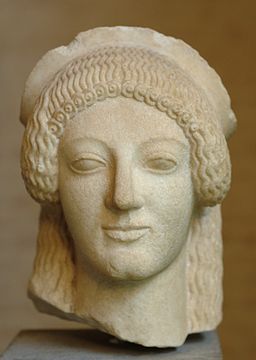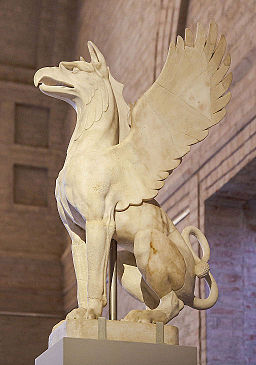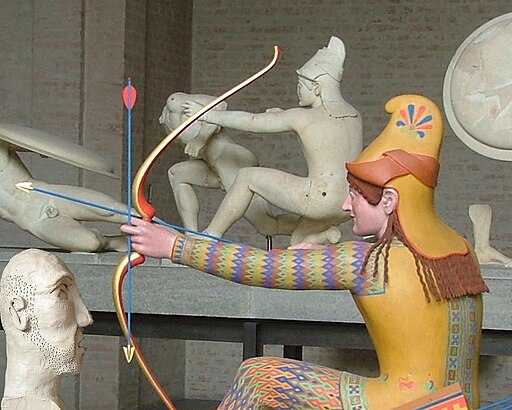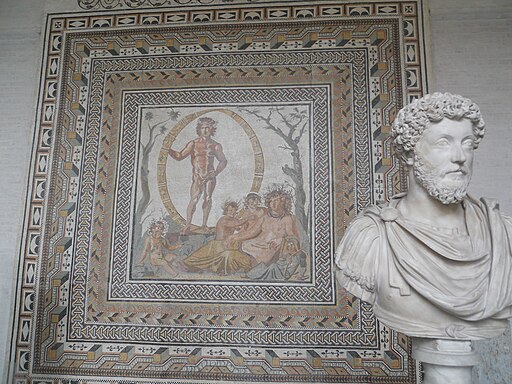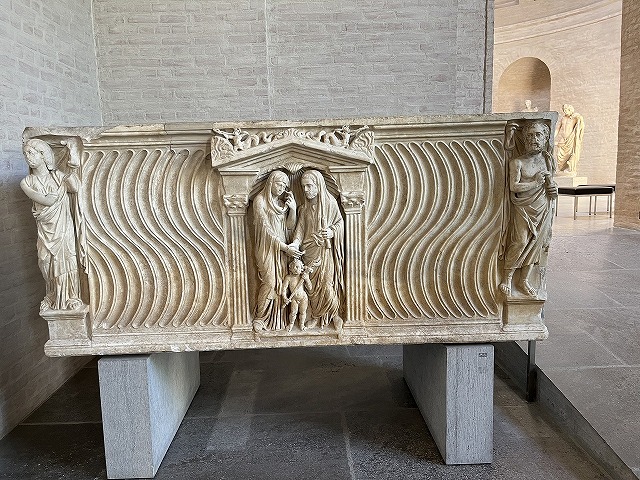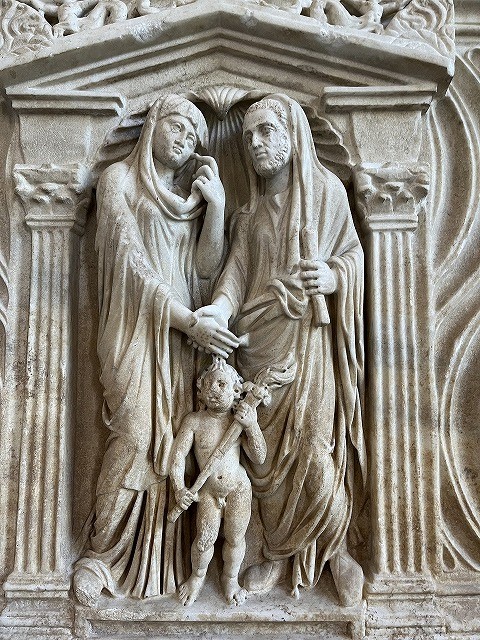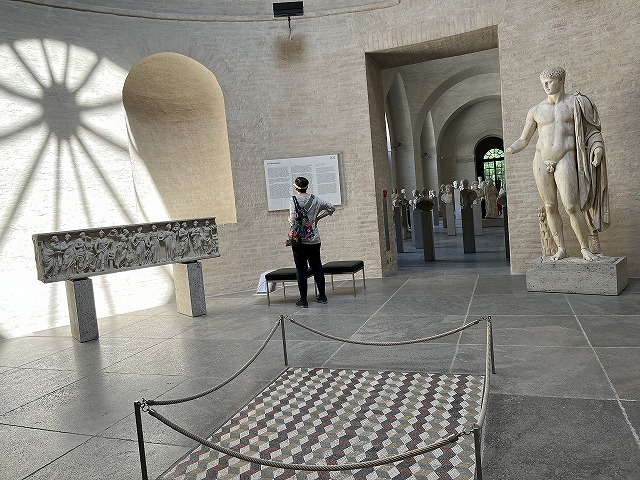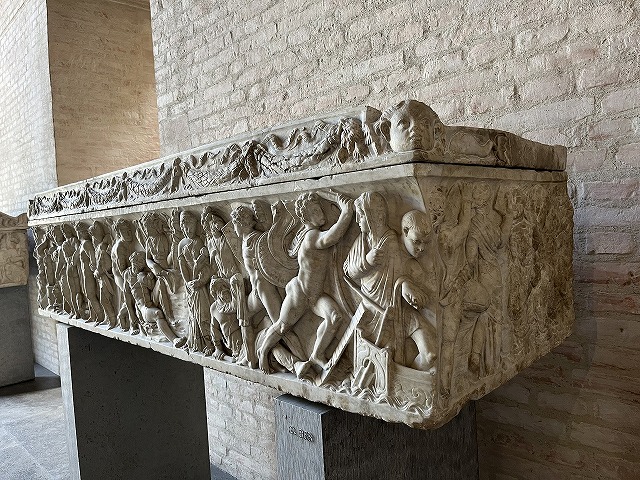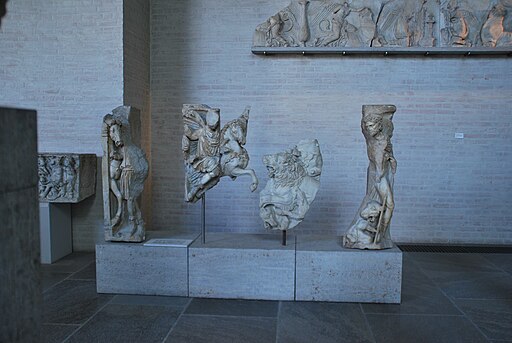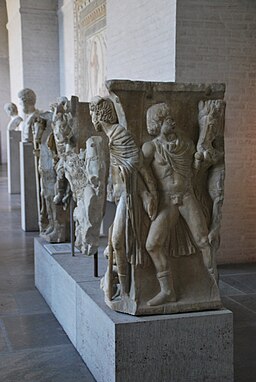ミュンヘン/ベルリンの希臘・羅馬美術

2023年6月 Germany,ミュンヘン・(ワイマール・)ベルリンの旅で見たギリシア・ローマ美術をより深く見ます。←(前ページmunich.html:アファイア神殿の破風彫刻群、アッティカの墓碑)
古代希臘・ローマの文物(文様/文化/象徴)
グリュプトテーク(ギリシア彫刻館)(2)
 Myスマホ写真 グリュプトテーク (Glyptothek) @ミュンヘン
Myスマホ写真 グリュプトテーク (Glyptothek) @ミュンヘン

この《眠るサテュロス》(BC 220)は、平凡社世界大百科事典(第2版)のギリシア美術の項で紹介される、5つの彫刻の一つ。
しかし個人的には、私メはヘレニズム時代のの彫刻は好みでない・・
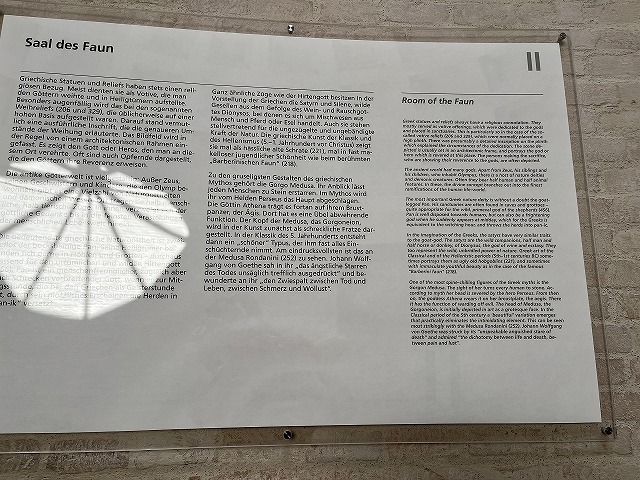
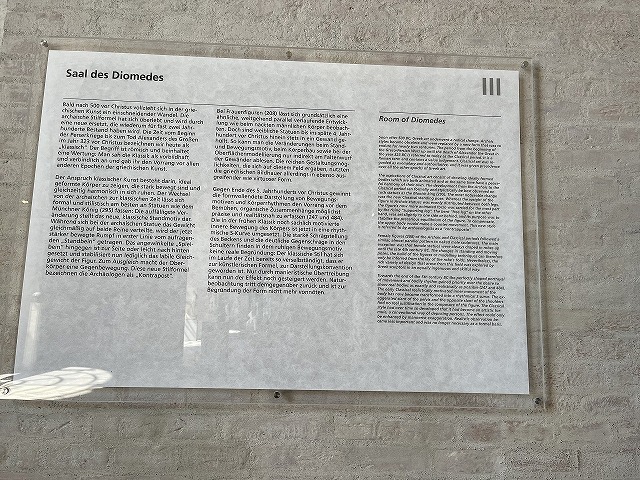
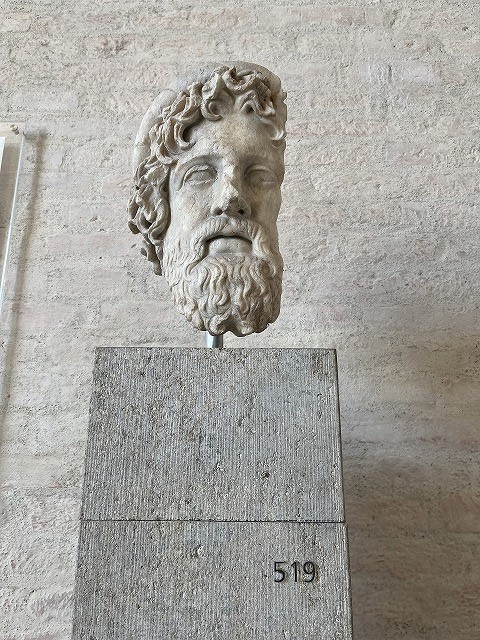
Head of Asclepius, copy after a statue from ca. 420–410 BC.
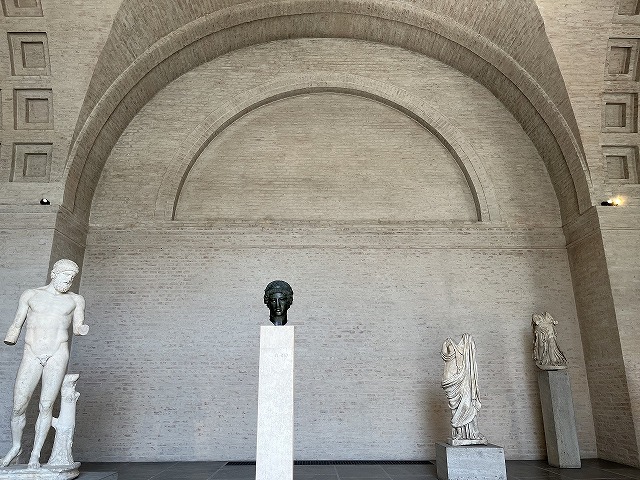

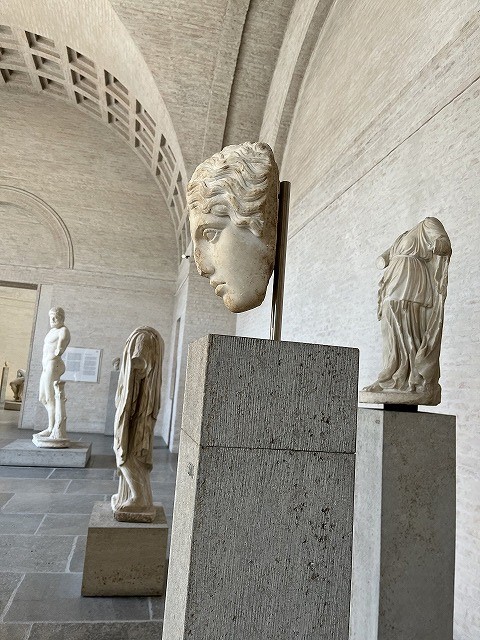
Room 3.
Head of Amazon. Copy, probably after a statue of Polykleitos (ca. 430 BC).

Bust of Athena (GL 213)
Room 1~4
![]() Wikimedia CommonsのGlyptothek Munichの画像はとんでもなく充実しています。(再掲)
Wikimedia CommonsのGlyptothek Munichの画像はとんでもなく充実しています。(再掲)
各Roomを見ます‥

Room1. Munich Kouros
Detail of the "Munich kouros", satatue around 540 BC, parian marble. Found in Attica, High 208 / 211 cm. Glyptothek Muinich, Inv. N. 169.

Relief satyrs Glyptothek Munich 456
Room 2. Saal des Faun
Barberini Faun、Rondanini Medusa、 Statue of a Silen

Rondanini Medusa Glyptothek Munich
関連ページ/2020k/gorgonocephalus.htmlゴルゴンの美人化: メデューサ・ロンダニーニ・・・これも頭だけなので、ゴルゴネイアに分類されるようだ。
Room 3. Saal des Diomedes

Room 3. Bust of Athena, type of the “Velletri Pallas” (inlaid eyes are lost). Copy of the 2nd century CE after a votive statue of Kresilas in Athens (ca. 430–420 BC).
H. 114 cm

Room 3. Head of young man wearing a winners binding. Bronze, golden lips (the silvered eyeball with garnet pupils are lost). Roman imitation of the Greek classic style of the 5th century BC (ca. Christ birth).
Room 4.のアッティカの墓碑は前頁でみました
Eirene (Glyptothek Munich)

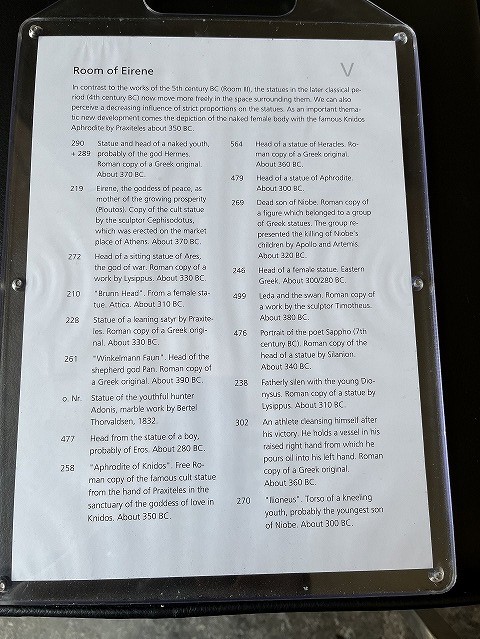
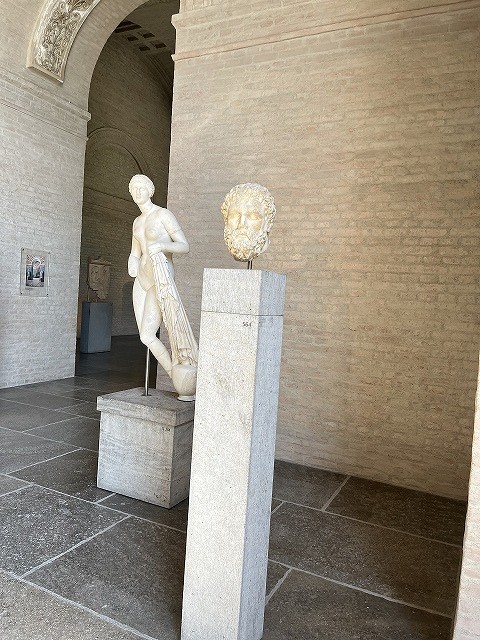
クニドスのビーナス
この形について、見たことがありました→2021k/rekisikan_3.html
roma/ophites.htmlウフィッツイ美術館、恥じらいのビーナス(アフロディテ)
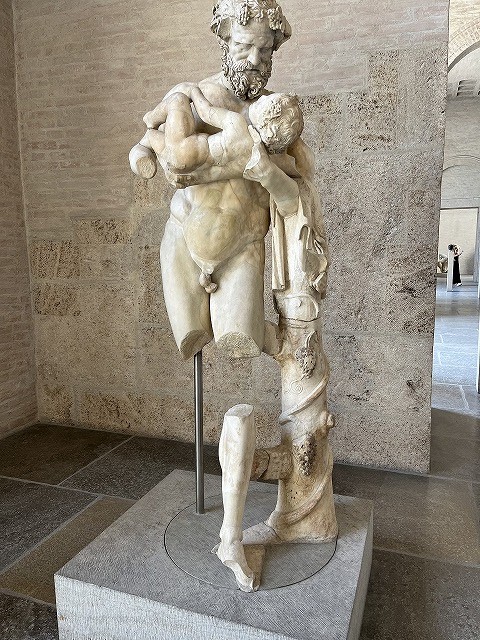
Room 5.
Silen and Young Dionysus (GL 238)
葡萄の神:ディオニュソス・・サテュロス
古代ギリシャ神話では、サテュロスはブドウの収穫、儀式の狂気、演劇、豊饒の神であるディオニュソスの仲間( https://en.wikipedia.org/wiki/Resting_Satyr)

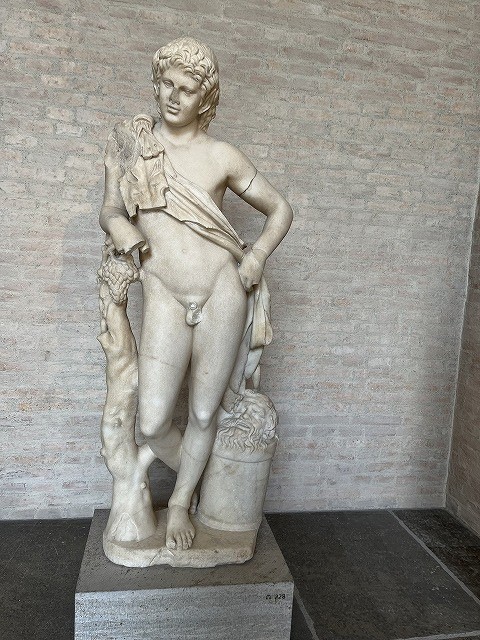
Room 5.
Leaning satyr by Praxiteles (GL 228)
プラクシテレのタイプに倣ったコピー (紀元前 320 年頃)
クラシック後期(紀元前400~300年)
代表的な彫刻家はプラクシテレス
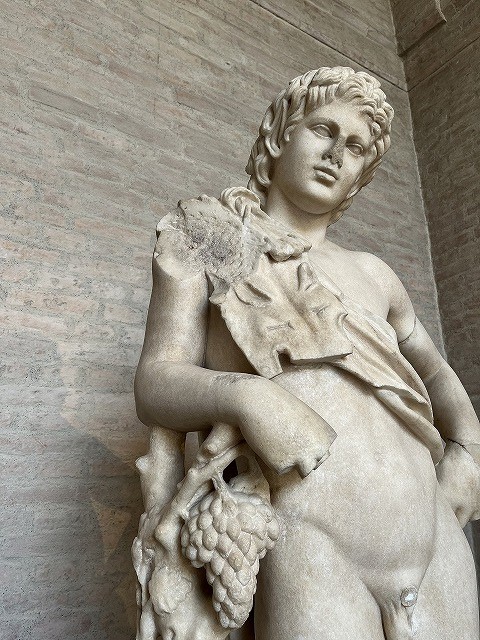
Room 5~9
Aphrodite of Knidos (GL 288) クニドスのビーナス
Athlete cleansing himself (GL 302)
Boy, Hermes type (GL 290)
Dead son of Niobe (GL 269)
Eirene (Glyptothek Munich)
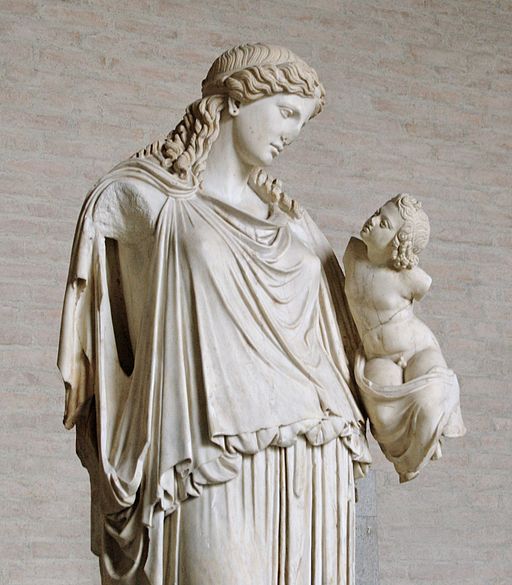
Cephisodotus the Elder, Eirene with Ploutos, 380-370 BC, Plaster cast, Hostinné
Ilioneus (GL 270)

ルスポリ牧神、ミュンヘングリプトテーク(inv.228)
Leaning satyr by Praxiteles (GL 228)
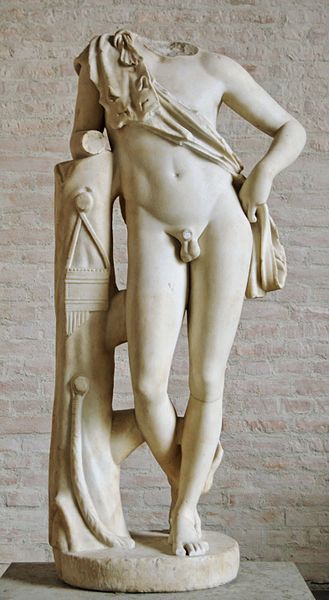
Leaning satyr by Praxiteles (GL 229)
Leda and the Swan by Timotheus (GL 499)
.jpg)
Silen and Young Dionysus (GL 238)
Room 6. Saal des Grabreliefs mit dem Jäger
Room 7. Saal der Westgiebelgruppe des Tempels von Ägina
Room 8. Sphinxes (Glyptothek, Munich)
Room 9. Saal der Ostgiebelgruppe des Tempels von Ägina

Room 10.
Honour document. The inscription means that a G. Saupheios Maker (Γ. ΣΑΥΦΕΙΟΣ ΜΑΚΕΡ), priest of the roman imperial cult, organised some athletic contests for young and old people, and used the money he earned by doing this on installing a food market inside the city. From Apollonia upon Rhyndakos, Anatolia, 40 CE.
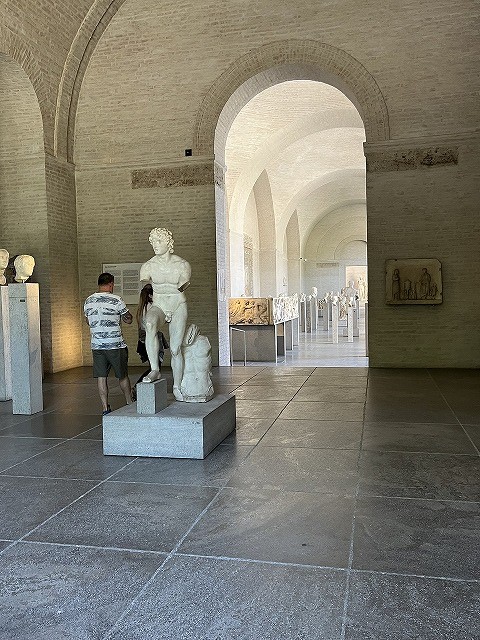

Room 10.
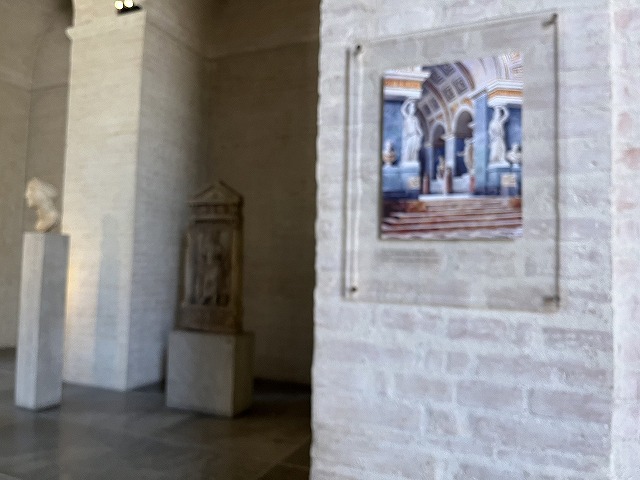

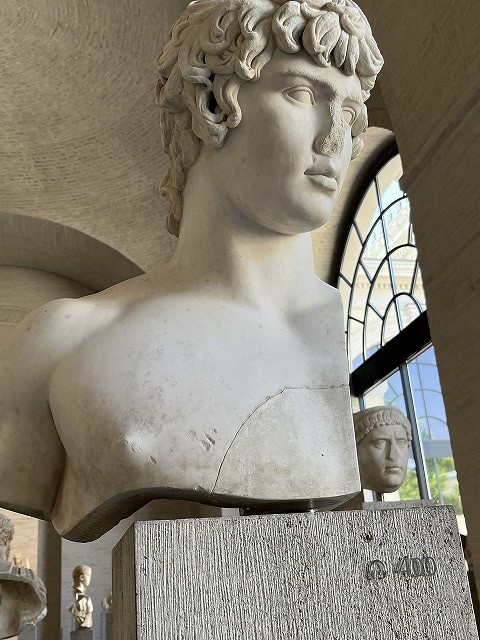
Room 11.
Bust of Antinou
Room 10~13
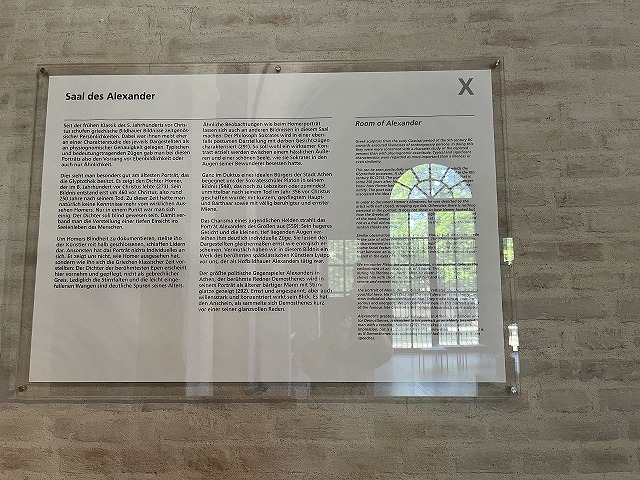
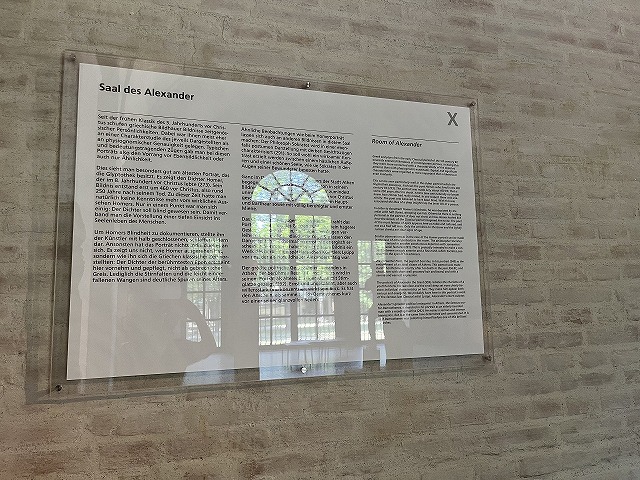
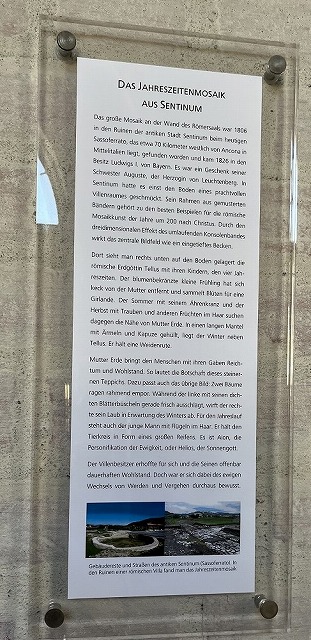

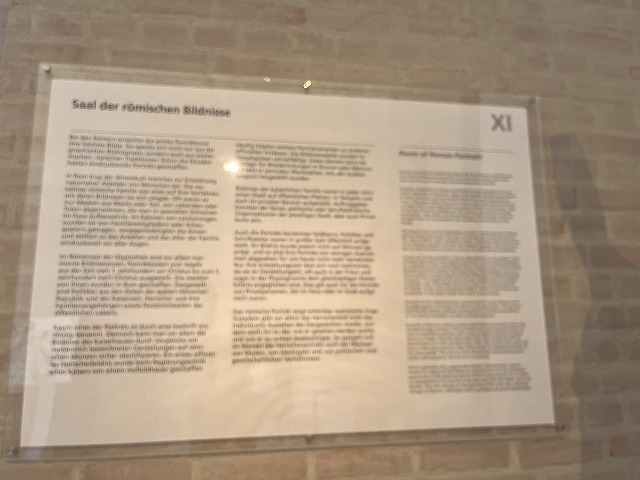
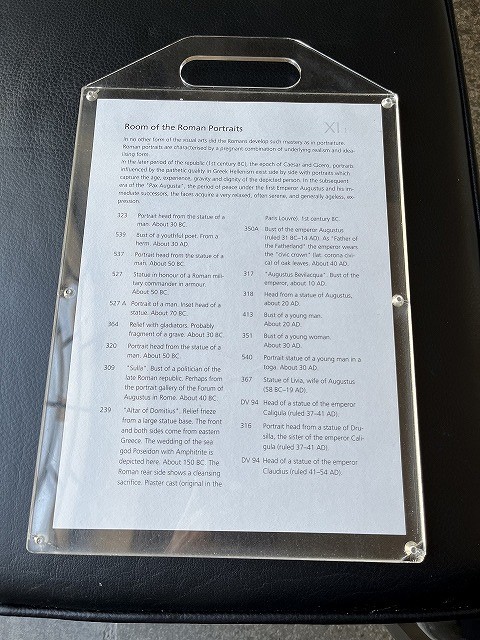

Room12.アポロン
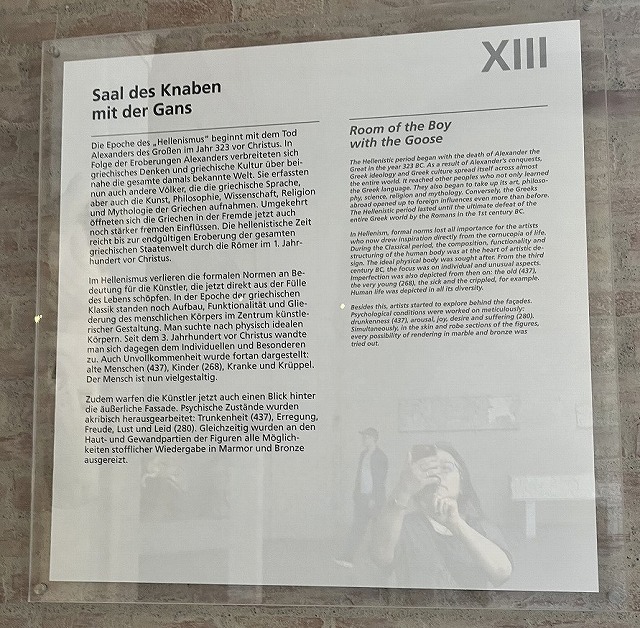
Room13.

Room 10.So called “Alexander Rondanini” (head). Ancient copy, the original belongs to a group created by Euphranor: King Philip of Macedon on his chariot lead by 4 horses; his son Alexander, taking on the chariot, holds the reins in both hands (armor and garb added the copist). Creation of the group after the Battle of Chaeronea, 338 BC.
Aion mosaic
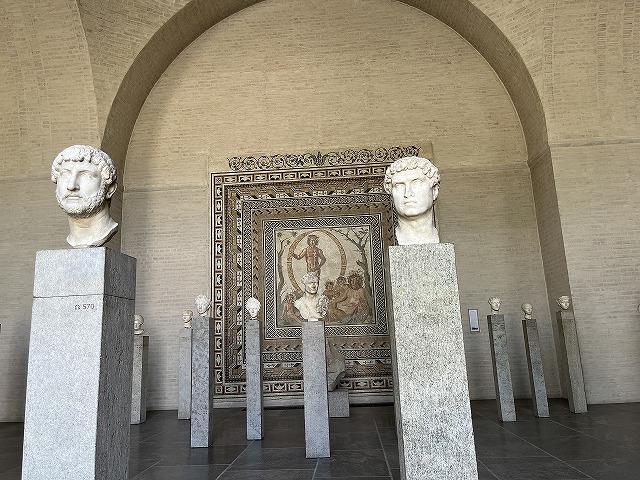
Glyptothek Munich - Room 11.
Aion mosaic (GL W504)
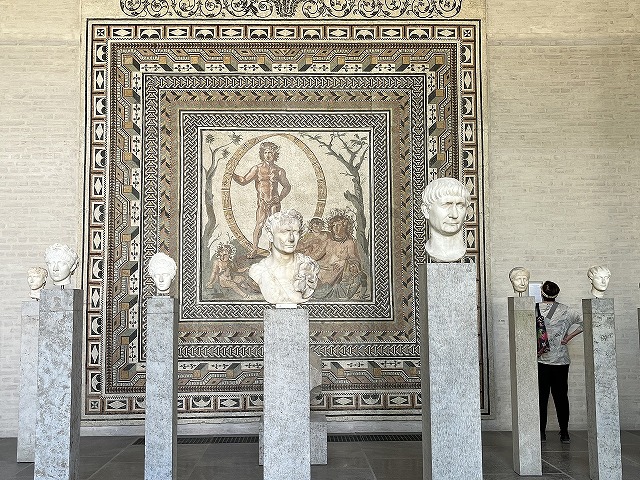
Römisches Mosaik(ローマンモザイク・・たぶんギリシア絵画を写したもの)
アイオンは一つのテーマでした。ここにあったのですね。⇒ aion.html
アイオン
Aion (deity)アイオーン神

Large floor mosaic from a Roman villa, ca 200-250 AD
Glyptotek - Munich
Roman mosaic from a villa in Sentinum, present day Sassoferrato
The god Aion in a circle of the zodiac
The earth-mother Tellus with a total of 4 children who represent the seasons
アイオーン、永遠の神は、緑の木と裸の木(夏と冬、それぞれ)との間で、
干支で飾られた天球(獣帯)の内側に立っている。
四季を表現する4人の子供と
母-大地の女神、結婚の女神(ガイアのローマン対応)が彼の前に座っている
(by National Earth Science Teachers Associatino (NESTA).ウラヌスのページ)

羅馬の彫像

Bust of Marcus Aurelius
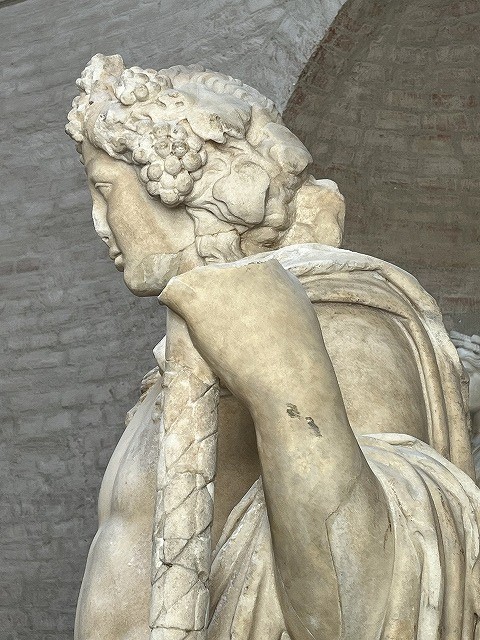

Room 12.
Apollo Barberini (Inv. 211)en.wikipedia/Apollo_Barberini
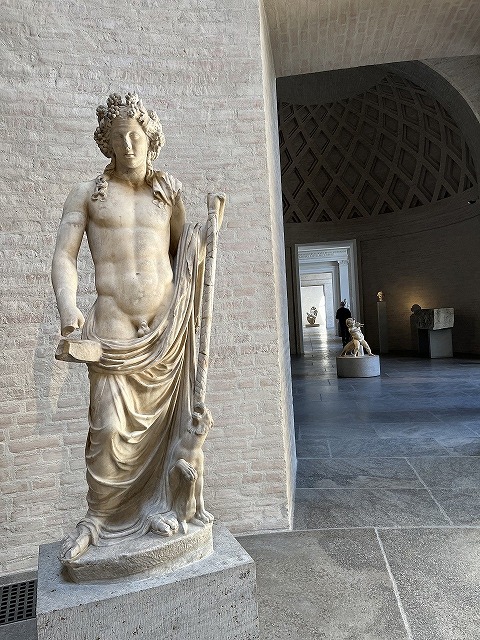
Room 13.Statue des Dionysos
Room 11. Saal der römischen Bildnisse
Mosaik und Reliefbildwerke
Room 12. Saal des Apollon
Room 13. Saal des Knaben mit der Gans
サルコファガス
Ancient Roman sarcophagi in the Glyptothek Munich
Sarcophagus of Niobids (GL 345)
Sarcophagus of Orestes and Iphegenia (GL 363)
Sarcophagus of Selene and Endymion (GL 328)
関連ページ
⇒棺の美術史:棺の美術の概観
2015k/sarcophagus.html中世初期の石棺
小学館 世界美術大全集 西洋編7・西欧初期中世の美術 1997
宮坂朋「埋葬美術―カタコンベと石棺」より
初期キリスト教の石棺はローマ石棺から多くの要素を受け継いだ
古代末期に彫刻芸術が衰退していく中で石棺装飾は彫刻の主な表現手段となった。
ローマの工房は3~4世紀にキリスト教石棺の最盛期を迎えるが、5世紀初めに完全に途絶える
一方コンスタンティノポリスとラヴェンナは4世紀末から活動を開始
ルーブルのムーサの石棺(紀元150-160年)ローマ 出土
石棺の形
1.浴槽型(東方起源 表面全体に浮彫装飾)
2.箱形(前面と両側面の身に装飾)
装飾の基本タイプ
1.フリーズ式 四帝共治の時代(293~313)に登場
2.ストロギリス式 strigilis膚掻きべらのようなS字型の並べられた装飾
3.円柱式 小アジア起源https://imaginemdei.blogspot.jp/
◇各々の型の2段式
◇市門型石棺(テオドシウス帝Theodosius時代 神学的象徴主義)ガリア地方で制作 4面すべてに装飾
Kasten eines römischen Meerwesensarkophags, um 220–230 n. Chr. (B. Andreae/H. Jung),
ausführliche Beschreibung siehe Arachne-Datenbank
Glyptothek München 218
Room 11.Relief from the altar of Domitius Ahenobarbus in the Glyptothek Munich
文献(軽め)
『博物館へ行こう 』(岩波ジュニア新書)
木下 史青 | 2007刊
グリュプトテークは 「ギリシャ・ローマ時代の価値観をもとにした美術空間」である、という。
大學3年の春に出会った時の思いを語り、博物館の魅力を語りつくして、読ませる良書。
「静けさに満ちた調和の空間」という言葉に、「人生のエアーポケット」に一人在る、という言葉を思い出しました。
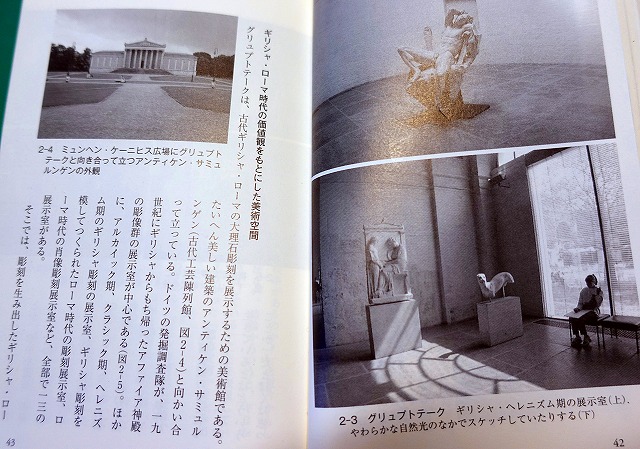
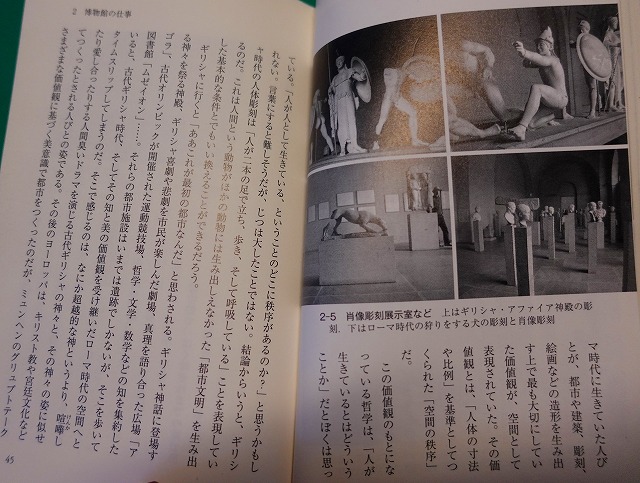
体をねじっている小品
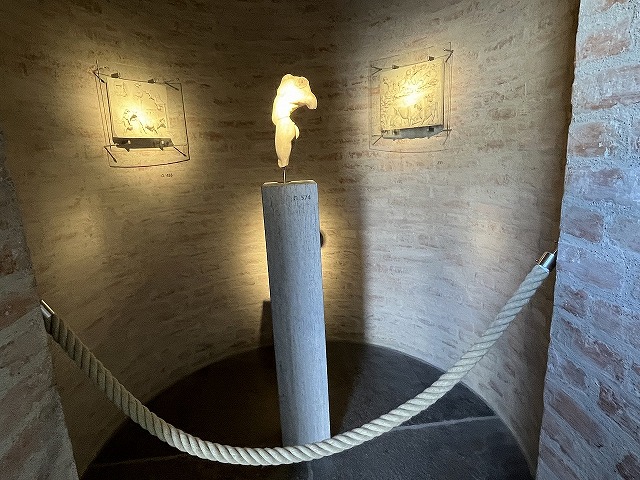
ゆっくり回転しています
破損の組み立て
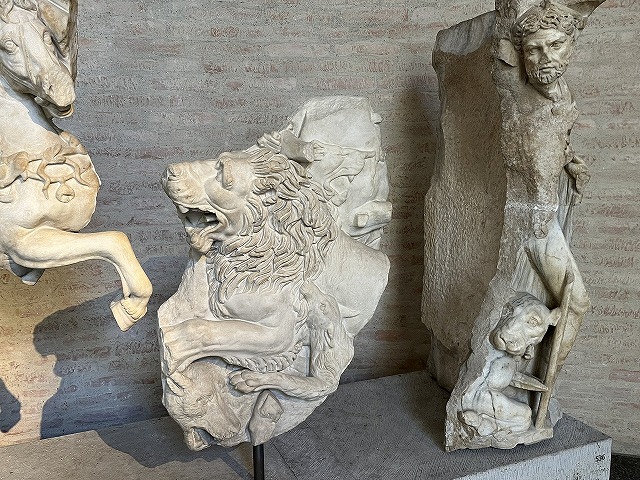
wikipediaの別アングル画像も参照したい⇒Glyptothek München 466
 グリュプトテーク (Glyptothek)の頁ここまで、次はグリュプトテーク向かいの州立古代収集館へ。
グリュプトテーク (Glyptothek)の頁ここまで、次はグリュプトテーク向かいの州立古代収集館へ。
- グリュプトテーク
- グリュプトテーク(2)
- 州立古代収集館
- グリュプトテーク(2)
- 「ギリシャ美術史入門」を読む
- 「ギリシア美術」を読む




